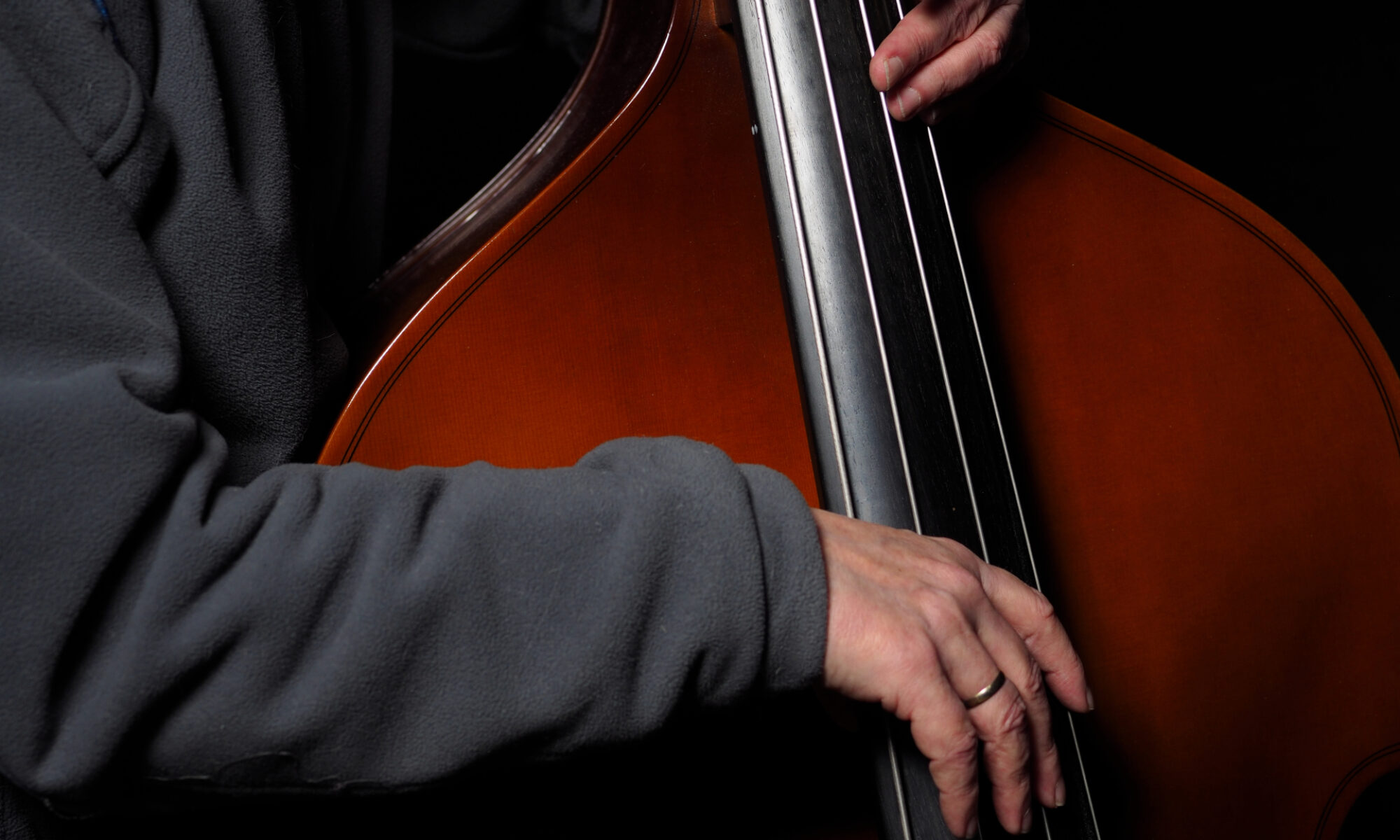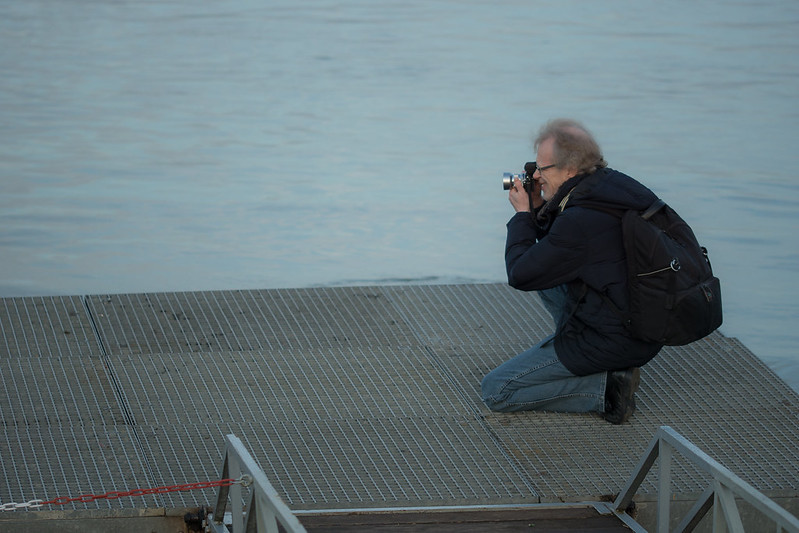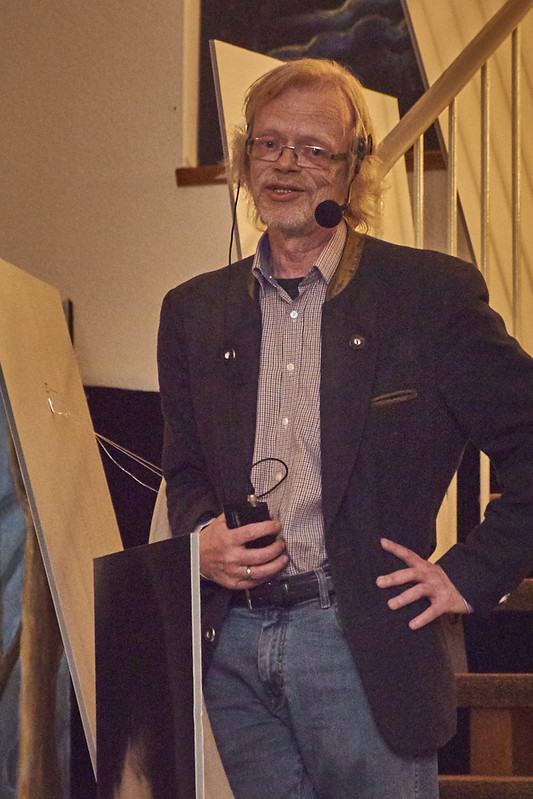After reading the news about Ian Murdock’s death and the follow-up mournings of the greater Debian community I remembered that I actually met him, talked to him, and even email-interviewed him in 2006. I haven’t searched my old blog databases for that because there was a time we didn’t backup and lost bits of it. But I still have the original email with his answers to my questions. Remember that this is 10 years ago, so it’s not about the current stable version 8.x (“Jessie”) of Debian, but about older stuff.
Anyway, here’s his answer mail with the original headers:
##### Original email from Ian Murdock starts here #####
From – Sat Sep 23 19:22:35 2006
X-Account-Key: account2
X-UIDL: UID39347-1147715635
X-Mozilla-Status: 0013
X-Mozilla-Status2: 00000000
Return-Path:
X-Original-To: wolfgang@lonien.de
Delivered-To: wolfgang@lonien.de
Received: from nf-out-0910.google.com (nf-out-0910.google.com [64.233.182.190])
by m21s11.vlinux.de (Postfix) with ESMTP id A05E094C06
for ; Sat, 23 Sep 2006 12:06:49 +0000 (UTC)
Received: by nf-out-0910.google.com with SMTP id a25so1144790nfc
for ; Sat, 23 Sep 2006 05:06:49 -0700 (PDT)
DomainKey-Signature: a=rsa-sha1; q=dns; c=nofws;
s=beta; d=gmail.com;
h=received:message-id:date:from:sender:to:subject:in-reply-to:mime-version:content-type:content-transfer-encoding:content-disposition:references:x-google-sender-auth;
b=iO/RrYLyGeQBfAHEN4w8YCHxM05CGyM07fRX9uygypcUVtQHFnq5pU7xg3PxrJQuquIu3DEHYA/KuX+6S5NvbGmtDcyO6MGljsgjPAxn6iJc//wDwwdL2dl+jHJfFVfyaeSbncS0Eu4q6FMh8bjSLrvxGNbbmMie87okNx8FqIo=
Received: by 10.48.162.15 with SMTP id k15mr3287197nfe;
Sat, 23 Sep 2006 05:06:49 -0700 (PDT)
Received: by 10.49.18.20 with HTTP; Sat, 23 Sep 2006 05:06:49 -0700 (PDT)
Message-ID:
Date: Sat, 23 Sep 2006 08:06:49 -0400
From: “Ian Murdock”
Sender: imurdock@gmail.com
To: “Wolfgang Lonien”
Subject: Re: Interview?
In-Reply-To: <44D506CA.8070708@lonien.de>
MIME-Version: 1.0
Content-Type: text/plain; charset=ISO-8859-1; format=flowed
Content-Transfer-Encoding: 7bit
Content-Disposition: inline
References: <44CEF2EB.40802@lonien.de> <44D1FE34.3010902@imurdock.com>
<44D26BA3.3050509@lonien.de> <44D334BE.90609@imurdock.com>
<44D506CA.8070708@lonien.de>
X-Google-Sender-Auth: 5417eb112755ca8f
Ok, here are my answers–sorry again for the delays in getting this to
you. Hope it was worth the wait.
On 8/5/06, Wolfgang Lonien wrote:
> *Questions:*
>
> *A. The Past*
>
> A1. Ian, as the links above show, pretty much everything about your
> invention of Debian GUN/Linux can be read somewhere else already, and we
> won’t bother you with questions being answered there. So let’s get a bit
> “between these lines”. Very much like with Linus, it all started with
> the posting of a message to a newsgroup. How was that time, and what
> were the reactions?
I had been using Linux for a few months, and I was totally swept up by
the community atmosphere. It was really electric back then. Naturally,
one of your first reactions in a situation like that is to give back. I
wanted to contribute something. One of the most glaring shortcomings in
those days was the lack of a nicely packaged way to get Linux onto a
computer. In those days, a lot of skill and patience was required to do
that. I figured for every person that had the time and inclination to
shoehorn Linux onto a computer there would be hundreds who might find
Linux interesting if it were a bit less daunting to install it. So, I
decided to create a nicely packaged Linux system. I called it the
“Debian Linux Release” for a while, which you can see if you go back and
read the old stuff. By the way, this was before they were called
“distributions”. And it was also about a year before
Red Hat, SUSE, Caldera, and the other commercial distros started.
The reaction was extremely positive. I got a huge number of responses
to that first post. I still have hardcopy that I printed on a Citoh
printer the size of a Volkswagen in the basement of the Math building at
Purdue. One of those early responses was from Richard Stallman, who
said, “We’re starting to get interested in Linux and are thinking of
distributing it, and we like your approach,” which absolutely stunned
me–one minute, I’m this random guy, the next minute I’m trading email
with Richard Stallman. It was almost surreal. It’s a good thing
I printed it all off, because when you’re developing operating systems,
and you can’t afford a separate test system, you tend to lose your data
from time to time, and I did that several times over. So a
lot of that early correspondence is gone now, except for what I printed.
Here’s a bit of history I’ve never talked about before in an interview:
In August 1994 or so, we got an email from Marc Ewing, who said, “I’m a
big Debian fan, and I’m starting a company called Red Hat to make a
commercial Linux product, and I’d like to base it on Debian, not really a
company yet, just me…” Of course, it didn’t happen that way, but
wouldn’t that have been interesting? (Especially for my bank account.)
Pat Volkerding and I also toyed around with the idea of merging
Debian and Slackware too, but that never happened, mostly because
Pat thought the distributed development model would never work.
> A2. You describe yourself there as a 20-year-old college kid, so you’re
> only 33 now? Would you like to tell us something about life at Purdue
> [the university]? And maybe about the “Deb” part of Debian? She was your
> girlfriend at that time, right?
Yes, I’m 33. I loved my time at Purdue. It was still in that magical
time when computers (or powerful ones anyway) weren’t available to
just anybody. As an undergraduate, the only system we had access to
was a Sequent Symmetry running Dynix, Sequent’s long dead Unix
variant. There were a variety of terminal rooms around campus that
we could use to connect to it, mostly on old Z29s. I spent a lot of
time in those labs with friends of mine, Jason Balicki and Mike
Dickey, learning every nook and cranny of Unix. We used to prowl
around campus looking for labs with laser printers or X terminals.
We used to drool over the Sun workstations. We used to go to the
Math building and stare at the Sequents through plate glass, enviously
watching the lucky bastards who got to log in at the system console as
root. Deb was my girlfriend at the time, and is now my wife. We’ve
been married for almost 12 years and have three beautiful children.
Deb’s a wonderful woman and has always tolerated me and the fact
that I’ve always got a project of some sort that’s preoccupying me.
> A3. The first versions of Debian were available from Sunsite, UNC, while
> most of the mailing lists were set up by Bruce at Pixar. How difficult
> (or easy) was it to get all that support? And was it just Bruce, for
> example, or the whole Pixar company who were supporting Debian?
It wasn’t that hard. Even back then, the community was large, and there
was always someone willing to help out. The Debian mailing lists were run
from Bruce’s workstation at Pixar. Pixar as a company certainly wasn’t
supporting Debian, though they had to know about the mailing
lists (they were widely publicized) and never did anything about them.
> A4. You spoke of a couple of dozen developers and some hundreds of users
> in the beginning? And later some 60 developers? Sounds like an
> exponential growth until today…
The growth has been in fits and starts. The project hovered around
200 developers for a long time in the mid-1990s. There was talk that
Debian had hit a ceiling, that it couldn’t grow any more. Of course,
that proved to be false. Debian’s gone through growing pains, just like
it’s going through growing pains now with the release process. It’ll
get through, just like it always has. Some people forget that it’s
hard to run a large organization, and that’s essentially what Debian
is. A 1,200 person organization is large for a *company*, and things
get even harder when you’re not writing paychecks to motivate people.
> A5. What was actually more difficult: the first steps from the idea to
> the making, and the coding of the first dpkg, or managing it all (and
> coding less) until Bruce took over?
Statistically, getting a project off the ground is the hard part. Most
new endeavors never get beyond the initial idea. With Debian, I was
lucky–I was in the right place at the right time with the right ideas.
I learned with later projects, like Progeny, how hard it truly is to get
something to catch fire like that. For Debian, the hardest part by far
was the growth and managing it. How do you go from one person to 60
people and not fly apart at the seams doing so? It’s hard enough to do
that in a company, but we were doing something absolutely
unprecedented. Distributed development may be commonplace now, but
it certainly wasn’t commonplace back then. The conventional
wisdom was that it wouldn’t work, and that Linux was an aberration.
> *B. The Present*
>
> B1. Are you still following the development of Debian?
Sure.
> B2. Debian and the FSG? Debian is a member, but not fully compliant
> (according to the Wikipedia page about the FSG)? And so it is not one of
> the “LSB certified products”?
I’m happy to say that that’s changing, and that Etch will be fully
compliant and certified when it’s released later this year.
> B3. Debian and Ubuntu? Some developers have mixed feelings about such
> relationships, describing Debian as a “supermarket”, where others can go
> shopping for free… others because they say there isn’t much coming back…
So, I guess I’m seen as something of an Ubuntu opponent, but that’s not
true. In one sense, there was some “vendor sports” going on there, as
Doc Searls would say, because Progeny and Canonical were competitors. But
the big part of it was genuine concern about compatibility. The idea of
.deb packages that wouldn’t install on Debian really worried me. I
remember seeing the first RPMs in the early 1990s that wouldn’t work on
Red Hat, and we all know where that went. Fortunately, the problem has
been averted–Canonical and Ubuntu are fully committed to the LSB, which
by definition will preserve compatibility not just between Ubuntu and
Debian, but between Ubuntu and all the other distros as well. So, all
of my concerns, and everything that led to the DCC, have been addressed
(which, by the way, is why you don’t hear much from the DCC anymore).
> B4. Debian in the “Enterprise”? It’s clearly one of the best server
> operating systems – at least *we* use it solely. Where can it be
> improved, or where does it have to be improved?
Debian is everywhere, and there is enormous interest in it in the
“enterprise”, I can attest to that. The problems aren’t with the
technology, they have more to do with the fact that most enterprises
aren’t quite sure what to make of a community project without support
guarantees and such. My key bits of advice would be to adopt a
predictable 18-24 month release cycle (we seem to be well on our way
there now with etch); to support the LSB, so that Debian gets into
the same cadence as the enterprise distros and so that ISVs have some
way of targeting the Debian platform without having to deviate from
their other ports too much (again, we’re in good shape here on the
present course); to commit to long term support (Red Hat and Novell are
both providing seven years of support now, which Debian can and should do
in the form of backporting security updates and critical bug fixes); and
to generally be responsive to the needs of commercial users (I’ve often
run into people who have contacted Debian, only to be met with
a deafening silence or a “we don’t care about commercial guff” response).
> B5. Why is the FSG prefering RPM over APT? Even Red Hat has its Yum now,
> and both Fedora and OpenSuse are offering apt.
The LSB doesn’t prefer RPM, though that’s a common misconception. We’re
planning to add alien to the LSB SDK, so ISVs can easily make .debs of
their LSB RPMs, as well as scripts to easily generate APT repositories
containing those converted .debs. The bottom line is that we want to make
it easy to install LSB applications using the distro’s “best
practice” method, and on Debian, that means APT. Furthermore, in LSB 4.0,
we’ll be revisiting the entire packaging question. We’re holding a
Packaging Summit in Berlin later this year to get the discussion started.
> *C. The Future*
>
> C1. You wrote 3 years ago, Debian shouldn’t focus on the commercial
> sector, but preserve the fragile Linux ecosystem. Could you precise that?
In many ways, Debian captures the essence of what Linux was in 1993. It’s
that essence that makes it special. It’s where we all came from. I’m a
big believer in the importance of commercialization (that’s how you have
maximum impact on the world), but I’m also a big believer in never
forgetting where you came from. If that gets left behind, then Linux just
becomes yet another Unix clone, and what’s interesting about that?
> C2. The future of that ecosystem, and of FOSS in general?
Looks bright to me, as long as we proceed on the present course.
To my previous point, the big commercial players understand that
Linux is different, and understand the importance of community. They
don’t want a repeat of UNIX. My one concern about the community is that
it’s sometimes fixated on the wrong things–software licensing, for one,
is less and less relevant today, as Tim O’Reilly has pointed out for
years. The future of software is on the web, not in tarballs. The
interesting software isn’t “distributed” anymore. There’s a real risk
that the community will get left behind unless it updates its thinking in
some of those key areas. And the mob mentality of the community is a real
concern too. Progress often means going against the conventional wisdom,
and it takes a steely kind of person to go against the grain in this
community, given how easy it is to tear people down by email at a
distance and at massive scale. I often wonder how much more we could
accomplish if there were lower barriers to sticking your neck out.
> C3. Debian on everything from small embedded to 512-way SMB systems?
Debian’s a great fit here because it’s so easy to customize to these
vastly different configurations. And it’s also easy for the vendors of
those hardware systems to support it. You don’t have to wait for some
third party OS vendor to decide your platform is at an interesting enough
scale to support it. And you don’t have to do all that work yourself.
> C4. You seem to be a man who thinks and has stategies for the long term.
> What about today’s 18-year-old high school kid? Would you still
> recommend IT/development as a strategy, or do we have other, more
> important problems right now, like for instance energy or environmental,
> or the like? What would you say to your own kids?
I hear a lot of people say that computer science isn’t an interesting
area anymore, but I thoroughly disagree with that. There’s still an
enormous number of problems to be solved. I’m not sure how many of
those problems are in the operating system anymore, at least the operating
system in the traditional sense, but the web in particular is still in its
infancy in terms of what can be done with it. Of course, there are plenty
of interesting problems in other disciplines, particularly around energy,
but I’m a computer guy. What I’ll tell my kids is to find something you
love to do. That way, it isn’t work, and you get paid to play all day.
What I tell open source developers is to think big, audacious thoughts.
Particularly if you’re young, not married, don’t have kids, etc.,
you have nothing to lose–enjoy it while it lasts, because it doesn’t..
> C5. This new community site is open for comments or questions from
> readers. Would you answer to some of them for a short time, in case they
> still have questions (or found mine too silly)?
Sure, though my turnaround time may be slow.
-ian
—
Ian Murdock
317-863-2590
http://ianmurdock.com/
“Don’t look back–something might be gaining on you.” –Satchel Paige
##### Original email from Ian Murdock ends here #####
Thanks again Ian. It was an honour and a pleasure to meet you, and I’m still using Debian both at home (where I write this) and on my server (from which people can read this).
To all our readers, as always, thanks for reading.
























